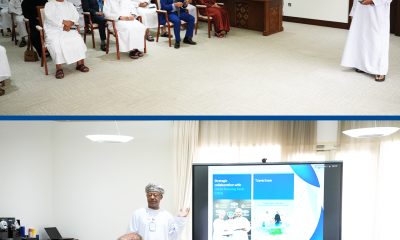Economy
Saudi Quarterly Budget Deficit Widens as Capital Spending Jumps

(Bloomberg) — Saudi Arabia’s budget deficit widened in the second quarter as officials ramp up spending to stimulate a sluggish economy.
- The budget gap of 33.5 billion riyals ($8.9 billion) compared to 7.4 billion riyals in the same period last year, the Finance Ministry said in a statement on Tuesday.
- Spending rose 5% from the second quarter last year, with significant jumps in capital spending and outlays on subsidies and social benefits.
- Oil revenue dropped 5% year-on-year and non-oil revenue declined 4%.
The data suggests that a long-promised injection of government cash is finally materializing as officials try to boost economic growth in the world’s largest oil exporter. Gross domestic product is expected to grow 1.7% this year, a second year of expansion after contracting 0.7% in 2017, according to data compiled by Bloomberg.
“A key positive trend is the pickup in capital expenditure, which points to some progress with investment activity and is likely to be in line with a wider trend,” said Monica Malik, chief economist at Abu Dhabi Commercial Bank. “We are starting to see this shift.”
Capital spending reached 61 billion riyals in the second quarter, a 27% annual increase that the Finance Ministry attributed to “the implementation of housing projects and other development projects.” Subsidy spending rose 71% as the government provided support to small businesses, the ministry said.
The period also saw greater spending on social protection programs, including social security, student bonuses, a cost-of-living allowance for government employees and the “Citizens’ Account” program that gives poor and middle-income Saudis cash to offset the impact of austerity measures, according to the statement.
A decline in non-oil revenue — which has generally been rising since the government implemented a fiscal reform plan — was mostly due to a 37% drop in “other revenues,” which the ministry didn’t elaborate on. Revenue from taxes on goods and services was up 23%.
–With assistance from Sarah Algethami.
-

 Alamaliktistaad Magazines2 months ago
Alamaliktistaad Magazines2 months agoAlam Al Iktisaad – September 2025 Edition
-

 News2 months ago
News2 months agoKitchenomiKs Secures Investment of US$3.2M Led by Jasoor Ventures
-

 Banking & Finance2 months ago
Banking & Finance2 months agoOman Arab Bank Highlights Its Ongoing Strategic Initiatives and Future Plans
-

 News2 months ago
News2 months agoIEA Expects Global Oil Market to Remain Oversupplied in 2026
-

 Energy2 months ago
Energy2 months agoWLGA Middle East LPG Summit & Expo 2025 to be held at OCEC on November 10 and 11
-

 Real Estate2 months ago
Real Estate2 months agoAl Mouj Muscat Unveils Azura Beach Residences Phase 2: A New Chapter in Waterfront Living
-

 Leaders Speak1 month ago
Leaders Speak1 month agoDhofar International Development and Investment Company: Driving Sustainable Growth and Strategic Synergies in Oman’s Investment Landscape
-

 Events1 month ago
Events1 month agoOER Corporate Excellence Awards 2025 Honours Entities and Innovations in Oman































You must be logged in to post a comment Login